Research: Fantasy Worlds
- thesnowelf

- Apr 12, 2018
- 46 min read
Updated: Jun 10, 2018
Warning. This is a very long blog post so feel free to skim through and scroll to the bottom to read the final conclusion.
For this research post I will be researching existing Fantasy Worlds to help me with creating my own.
First of all, what is a fantasy world?
A fantasy world is a human designed world created in fictional media, such as books, film or games. Typical fantasy worlds involve magic or magical abilities, nonexistent technology and sometimes, either a historical or futuristic theme. Some worlds may be a parallel world connected to Earth via magical portals or items (like Narnia); a fictional Earth set in the remote past or future (like the Lord of the Rings middle earth); or an entirely independent world set in another part of the universe (like the Star Wars Galaxy).
Many fantasy worlds draw heavily on real world history, geography, sociology, mythology, and folklore.
As my world is going to be inspired by The Middle Ages/Medieval Times, I'm going to be doing research into worlds that are like this. I will be looking at everything from their maps to the amount of kingdoms they have to the races to the food they eat.
Middle Earth from Lord of the Rings

Lord of the Rings is a fantasy series of both novels and films.
The books were written by J. R. R. Tolkien between 1937 and 1949. These books were a sequal to previously written The Hobbit, published in 1937.
In 2001 and these novels were turned into films, starting with The Fellowship of The Ring (2001), then The Two Towers (2002) and lastly The Return of the King (2003). Around ten years later, the prequel, The Hobbit was made into films starting with An Unexpected Journey (2012), then The Desolation of Smaug (2013) and finally The Battle of the Five Armies (2014).
Middle Earth is were The Lord of the Rings and The Hobbit take place. Middle Earth is the name used for the habitable parts of Adra (Earth)
http://lotrproject.com/map/#zoom=3&lat=-1334&lon=1500&layers=BTTTTT
http://lotr.wikia.com/wiki/Middle-earth
Basic plot:
"An artefact of immense power owned by an evil warlord (super warlord) is lost over the many centuries, after his defeat, to creatures called hobbits. Now he rises from the ashes searching for his lost ornament. So a bunch of heroes comprising of people from all races (Elves, Men, Dwarves, Hobbits) team up with a wizard to destroy the ring (the ornament) where it was created because that's the only way to destroy it. Here is the catch, it was forged at Mt. Doom which lies in the backyard of this evil warlord. Together they journey killing Orcs on their way and resisting the power of the ring. Finally the two Hobbits are left alone and the task is up to them. They fight their inner desire to hold onto the ring alongside a creature that was twisted by the ring and risk everything to travel to mount doom and destroy it. "
https://www.quora.com/What-is-the-basic-story-of-The-Lord-of-the-Rings
Races
Men
Men are the Humans of Middle Earth. Although all Men were related, there were a lot of different cultures. The most important group of men in the stories of the First Age were the Edain. Although the word Edain refers to all Men, the Elves use it to distinguish those Men who fought with them in the First Age against Morgoth in Beleriand from others.
Breelanders
Breelanders are Men who share a community with Hobbits in the town of Bree, which is located just outside The Shire. The Men of Bree are often referred to as Big Folk to distinguish them from the Hobbits, or Little Folk. They are the only Men who regularly socialise with Hobbits, which means that they are the only Men who don't find the Hobbits small height weird.
Left: Barliman Butterbur, Appears in The Fellowship of the Ring. He is the innkeeper of the Prancing Pony in Bree.
Right: The Gatekeeper of Bree. Appears in The Fellowship of the Ring.
Corsairs of Umbar
The Corsairs of Umbar are descendants of the Gondorians, but these Men have taken to the sea as pirates and mercenaries. As such they are loyal only to themselves. Umbar is located to the south of Gondor.
Easterlings
The Easterlings are Men from the kingdom Of Rhûn, which is located in the East of Middle Earth. It also borders Mordor to the North. They have allied themselves with Sauron. They are seen by Frodo, Gollum and Sam entering the Black Gate of Mordor.
Gondorians
Gondorians are Men who came from from the ancient kingdom of Númenor. Since the death of the last King, Isildur, Gondor has been ruled by Stewards.
Top left: Aragon. Appears in The Fellowship of the Ring, The Two Towers & The Return of the King. Son of Arathorn and Gilraen.
Top Right: Boromir. Appears in The Fellowship of the Ring, The Two Towers & The Retusn of the King. Eldest son of Denethor II, the Steward of Gondor.
Bottom left: Faramir. Appears in The Two Towers & The Return of the King. Son of Denethor, Steward of Gondor.
Bottom Right: Denethor. Appears in The Two Towers: Special Extended Edition. Steward of Gondor.
Haradrim
Men from the kingdom located to the South of Gondor and Mordor who have allied themselves with Sauron.
Rohirrim
The Rohirrim are a rugged people who are less refined than the Gondorians who live to their south. However, the Rohirrim are well-known as Horse-Lords and breeders of a fine stock of horses.
Left: Éomer. Appeared in The Two Towers & The Return of the King. Nephew of Théoden, King of Rohan.
Middle: Eowyn. Appears in The Two Towers & The Return of the King. Niece of Théoden, King of Rohan.
Right: Théoden. Appears in The Two Towers & The Return of the King. King of Rohan.
The Wild Men
The Wild Men were dismissed when Eorl was granted the land of Rohan by the Steward of Gondor. They were driven into the hills by the Rohirrim and have resented them ever since. They now live in harsher terrain of Dunland and have also come to be known as Dunlendings.
http://lotr.wikia.com/wiki/Men
http://www.patriotresource.com/lotr/races/breelanders.html
http://www.patriotresource.com/lotr/races/corsairs.html
http://www.patriotresource.com/lotr/races/easterlings.html
http://www.patriotresource.com/lotr/races/gondorians.html
http://www.patriotresource.com/lotr/races/rohirrim.html
http://www.patriotresource.com/lotr/races/wildmen.html
Elves
The Elves, who called themselves the Quendi, and who in lore are commonly referred to as the Eldar (adj. Eldarin), were the first and eldest of the Children of Ilúvatar, and are considered to be the fairest and wisest of any race. Elves do not physically age, and are not subject to illness. However, they can be slain by violence or extreme negative emotion.
http://lotr.wikia.com/wiki/Elves
Left: Arwen Evenstar. Appears in The Fellowship of the Ring, The Two Towers, The Return of the King. First Elf to appear in The Lord of the Rings. Beloved of Aragorn. Daughter of Elrond Half-elven.
Middle: Legolas. Appears in The Fellowship of the Ring, The Two Towers, The Return of the King. A Woodland Elf from Mirkwood.
Right: Elrond. Appears in The Fellowship of the Ring, The Two Towers, The Retusn of the King. Father of Arwen Evenstar. Bearer of Vilya, Ring of Air, one of the three Elven Rings.
Drwaves:
Dwarves were a short, stocky race, a little taller than hobbits but much broader and heavier. Most Dwarves had thick, luxuriant beards in which they took great pride, and often forked or braided them and tucked them into their belts. Dwarves were a proud and stern race and were made to be sturdy to resist the dangers of their time. They were physically very strong, had great endurance, especially in the ability to resist heat and cold, and they made light of heavy burdens. Dwarves lived longer than Men, often up to two hundred and fifty years.

Left: Gimli. Appears in The Fellowship of the Ring, The Two Towers, The Return of the King. The lone representative of Dwarves.
The Silmarillion, Quenta Silmarillion, Chapter II: "Of Aulë and Yavanna"
http://lotr.wikia.com/wiki/Dwarves
Ents:
Ents are tree-like creatures, having become more and more like the trees that they herded. They vary in traits, from everything to height and size, colouring, and the number of fingers and toes. An individual Ent more or less resembles the specific species of tree that they typically guard.

Treebeard.
http://lotr.wikia.com/wiki/Ents
Hobbits:
Most Hobbits lived longer than Men, a race of which they might have been an off-shoot. The average lifespan of a Hobbit was about 100 years, though it was not unusual for a Hobbit to live as many as three decades beyond that. The time at which a young Hobbit matured and was accepted as an adult was 33, compared to a Man's 18 years. Thus, a 50-year-old Hobbit would only be middle-aged. The most distinguishing feature of Hobbits was their short stature. They were smaller than Dwarves and were usually between two and four feet in height. Hobbits were skilled listeners and had good eyesight. Although they were inclined to be fat and did not hurry unnecessarily, they were also nimble and deft in their movements.
Left: Frodo Baggins. Appears in all LOTR Films.
Right: Pippin Took. Appears in all LOTR FIlms.
http://lotr.wikia.com/wiki/Hobbits
Eagles
The Great Eagles were the messengers and spies of the King of Arda, and possessed the ability to see through all physical matter except for the blackness of Morgoth's evil pits.
Orcs
Orcs are said to be the result of the corruption of Elves. They do not like the light and prefer dark places like caves such as Moria. They generally don't even come out in daylight. They enjoy destruction and serve evil in Middle Earth such as Sauron and Saruman.
Trolls
Trolls are huge creatures that stand at least ten feet tall. They are evil hearted and many serve Sauron. It has been said that they were made "in mockery" of Ents. Many trolls cannot survive sunlight.
Uruk-hai
The Uruk-hai are the product of Saruman's attempts to create a fighter that improved on Orcs by being far stronger and unaffected by sunlight. It is theorized that they resulted from breeding of Orcs and Men.
Wizards
The Wizards were from the order of the Maiar and are more properly called Istari. There were five of them (though only two appear in the films & only three appear in the books) that were sent to Middle Earth early in the Third Age to help fight Sauron.
The wizards bore the forms of old Men; they were ancient and seemed to age very slowly. They possessed the great skill of body and mind; the greater portion of their power as Maiar resided in their staffs. Each of the Istari had his color and grade within the Order. Saruman the White was the eldest and Gandalf the Grey second. The other Istari was Radagast the Brown and the two Blue Wizards, who dwelt far in the east.
Left: Gandalf The Grey/White. Appears in all the films. Known as Gandalf the Grey. A member of the order of Wizards, which is headed by Saruman. Has a special admiration for Hobbits.Bearer of Narya, Ring of Fire, one of the three Elven Rings
Right: Saruman. The Fellowship of the Ring, The Two Towers, The Return of the King: Special Extended Edition. Head of the Order of Wizards, the Istari.
http://www.patriotresource.com/lotr/races/index.html
My Thoughts
After watching the films countless times, I'd have to say that Middle Earth is one of my favourite fantasy worlds. There is so much thought put into every aspect of the world that must of took years and years to create. Obviously, I don't have years to create my own fantasy world but I am trying my best. Lord of The Rings is certainly something to give me inspiration. From the map of middle earth, to the backstory to the characters and races. It has made me think about whether I want my world to just have humans, or to have other fantasy races too.
The Elder Scrolls - Nirn

https://vignette.wikia.nocookie.net/elderscrolls/images/e/e4/Map_tamriel.jpg/revision/latest?cb=20120706152110&format=original
As you can probably tell from my previous blog posts, The Elder Scrolls series is my all time favourite video game series. I love everything from the lore to the characters to the weapon and clothing design. I already know a lot about this universe but thought I would include it in this blog post to show that that is a big part of my inspiration for this project.
What is The Elder Scrolls? The Elder Scrolls is a series of action role-playing open world fantasy video games primarily developed by Bethesda Game Studios and published by Bethesda Softworks. The series is known for its richly detailed open worlds. Morrowind, Oblivion and Skyrim all won Game of the Year awards from multiple outlets. The series has sold more than 50 million copies worldwide.
The Elder Scrolls: Arena
This was the first of the Elder Scrolls series, released in 1994. Arena takes place on the continent of Tamriel, complete with wilderness, dungeons, and a spell creation system that allows players to mix various spells together.
Arena is played in a first-person perspective. Melee combat is performed by clicking the mouse and dragging the cursor across the screen to attack as you would if swinging a sword or other weapon in real life. Magic is used by scrolling through a menu found by clicking a button on the game screen, then clicking the spell to be used, and its target. I can see the idea behind using this method of attacking and using spells, but I can see how it would be very annoying and I'm glad that the game developers realised that and changed the attack/magic system to a less annoying version in future games.
At around 6 million square kilometers, the game world is a lot larger than that of The Elder Scrolls III: Morrowind, IV: Oblivion and V: Skyrim. "This is achieved by combining randomly generated content and specifically designed world spaces to create a realistic and massive wilderness, where one may find inns, farms, small towns, dungeons, and other places of interest. The towns contain developer-designed buildings and shops, but the order in which these appear and their names are randomized. There are several hundred dungeons and 17 specially designed dungeons for the main quest. Unlike later instalments in the series, Arena has no set overworld (the wilderness constantly generates), so the player must use the quick travel feature to get from one area of the world to another; it also takes a long time to walk from place to place due to the enormity of the world, which means walking to a nearby town could frequently take ten hours of real time and walking to distant areas could take several days.
Arena is known for being one of the first games to feature a realistic day/night cycle, where at sunset shops close and people clear the streets before the monsters spawn and roam around until morning.
The Plot
"The imperial battlemage Jagar Tharn betrays the Emperor Uriel Septim by imprisoning him in an alternate dimension, then assuming the Emperor’s identity and place on the throne. A lone prisoner must travel to Tamriel’s most famous and dangerous sites to collect the shattered Staff of Chaos, save the Emperor and free the Empire."1
As this game was made in 1994, the graphics compared to nowadays are awful. At the time though I suspect that people would of found it absolutely amazing. For this reason I can't realyl comment that much on the design other than for it's time, it looks great.
1 https://elderscrolls.bethesda.net/en/arena
http://elderscrolls.wikia.com/wiki/The_Elder_Scrolls:_Arena
The Elder Scrolls II: Daggerfall

The Elder Scrolls II: Daggerfall was released in 1996 for MS-DOS. It is a sequel to The Elder Scrolls: Arena and the second installment in The Elder Scrolls series.
In Daggerfall, as in all The Elder Scrolls games, players are not required to follow questlines or fill specific character types.
Daggerfall features a spell-creation system where, through the Mages Guild, players can create custom spells with several different effects. The game will then automatically generate the magicka cost of the spell based on the power of the effects chosen.
Other features include an equipment enchantment system (similar in concept to the spell creation system); the ability to buy houses and ships; a variety of clothing and equipment; dynamic political relationships between kingdoms; the ability to become a vampire, werewolf, or wereboar; and the combat system, which uses mouse movement to determine the direction and effect of weapon swings in melee combat.
Plot
The ancient golem Numidium, a powerful weapon once used by the great Tiber Septim to unify Tamriel, has been found in Iliac Bay. In the power struggle that follows, the King of Daggerfall is murdered and his spirit haunts the kingdom. The Emperor Uriel Septim VII sends his champion to the province of High Rock to put the king’s spirit to rest and ensure that the golem does not fall into the wrong hands.
The graphics and design of this game are significantly better than Arena, though still quite bad compared to now.
https://elderscrolls.bethesda.net/en/daggerfall
The Elder Scrolls Adventures: Redguard

The Elder Scrolls Adventures: Redguard is an action-adventure video game developed and published by Bethesda Softworks with a third person style, released in 1998.
Redguard differs from the core The Elder Scrolls games by being a linear action game played entirely in the third-person, whereas other entries in the series feature a free roaming environment from a first-person viewpoint. It also features a protagonist with a set name, race and set of skills, whereas the other games allow the player to customize all of these elements.
Plot
"Tiber Septim has swept through Tamriel, uniting its squabbling lands by force. Even the mighty Redguards of Hammerfell have come under Imperial control. Cyrus, the legendary Redguard mercenary, leads a rebellion against the Empire. Along with a faction known as the Restless League, Cyrus defeats the occupying forces at Stros M’kai and forces Tiber Septim to make peace with the Redguards." Description from the official Elder Scrolls website.
https://elderscrolls.bethesda.net/en/redguard
The Elder Scrolls Legend: Battlespire

Unlike other The Elder Scrolls games, Battlespire lacks a rest feature. Throughout the game there are no merchants to buy items from, and consequently, there aren't any gold pieces to find. Enemies do not reset when the player leaves the area and they are also not randomized as they were in Arena and Daggerfall. Released in 1997.
Bethesda introduced a multiplayer feature that included a cooperative mode to follow the single-player storyline online as well as a team-based versus mode to fight using all the same strategies from the single-player. This was done through the multiplayer network which is now GameSpy.
An almost completely dungeon-focused addition to The Elder Scrolls, Battlespire gave players an in-depth look at the underworld of Tamriel and featured a unique multiplayer mode.
The Imperial Battle College has lost contact with the Battlespire, an elite training center hidden in a pocket realm of Oblivion. An agent sent to investigate discovers the Battlespire’s staff dead and the gate back to Tamriel blocked With the facility under siege by vile daedra, the only way out is to go deep into darkness and into the Daedric Realms.
I must say that I love the cover art for this game. I love the use of the complimentary colour scheme. I think it looks striking and awesome. The smoky effect in the background gives it a mysterious sort of vibe.
The Elder Scrolls III: Morrowind

The Elder Scrolls III: Morrowind is an open-world, fantasy, action role-playing video game developed by Bethesda Game Studios and published by Bethesda Softworks. It is the third installment in The Elder Scrolls series of games, following The Elder Scrolls II: Daggerfall, and preceding The Elder Scrolls IV: Oblivion. It was released in North America in 2002 for Microsoft Windows and Xbox. The main story takes place on Vvardenfell, an island in the Dunmer province of Morrowind, part of the empire of Tamriel. The central quests concern the deity Dagoth Ur, housed within the volcanic Red Mountain, who seeks to gain power and break Morrowind free from Imperial reign. Although primarily a fantasy game, with many game-play elements and Western medieval and fantasy fiction tropes inspired by Dungeons & Dragons and previous RPGs, it also features some steampunk elements, and drew considerable inspiration from Middle Eastern and East Asian art, architecture, and cultures.
The Lost Prophecies speak of the Incarnate, a reincarnation of the Dunmer hero Nerevar, arriving in Morrowind to rid the land of a dark curse. To fulfill this prophecy, the Emperor sends an unknown and uncertain imperial courier to the island of Vvardenfell. Through a series of dangerous and magical quests, this unknown courier is transformed into one of the Emprire’s most enduring heroes.
The Elder Scrolls IV: Oblivion

The Elder Scrolls IV: Oblivion is an action role-playing video game. It is the fourth installment in The Elder Scrolls action fantasy series, following The Elder Scrolls III: Morrowind and preceding The Elder Scrolls V: Skyrim. The game was released for Microsoft Windows and Xbox 360 in March 2006, and on PlayStation 3 in March 2007.
Development for Oblivion began in 2002, directly after the release of Morrowind, opting for tighter pacing in gameplay and greater plot focus than in past titles. To design the graphics, Bethesda used an improved Havok physics engine, high dynamic range lighting, procedural content generation tools that allowed developers to quickly create detailed terrains, and the Radiant A.I. system, which enabled non-player characters (NPCs) to make choices and engage in behaviors more complex than in past titles. The game features fully voiced NPCs—a first for the series—and the music of award-winning composer Jeremy Soule. Upon release, Oblivion was well received by critics and has won a number of industry and publication awards. It was praised for its impressive graphics, expansive game world, and schedule-driven NPCs. It was successful both commercially and critically. Following a number of smaller content releases, Bethesda released two expansion packs for the game, Knights of the Nine and Shivering Isles, which were bundled with The Elder Scrolls IV: Oblivion Game of the Year Edition which was released in 2007, and later re-released as a fifth-anniversary edition in 2011.
In the shadow of evil, a hero will rise from the ashes of a fallen empire. The gates have been opened, and the battle has begun. Only one thing can save the world from Mehrunes Dagon and the demonic hordes of Oblivion. The true heir of the Septim line must be found and restored to the Imperial throne. The fate of the world rests in the hands of one. Find him, and shut the jaws of Oblivion.
https://elderscrolls.bethesda.net/en/oblivion
The Elder Scrolls V: Skyrim

The Elder Scrolls V: Skyrim is an open-world action role-playing video game developed by Bethesda Game Studios and published by Bethesda Softworks. It is the fifth main installment in The Elder Scrolls series, following The Elder Scrolls IV: Oblivion, and was released worldwide on November 11, 2011 for Microsoft Windows, PlayStation 3, and Xbox 360.
The game's main story revolves around the player character's quest to defeat Alduin the World-Eater, a dragon who is prophesied to destroy the world. The game is set 200 years after the events of Oblivion and takes place in the fictional province of Skyrim. Over the course of the game, the player completes quests and develops the character by improving skills. The game continues the open-world tradition of its predecessors by allowing the player to travel anywhere in the game world at any time, and to ignore or postpone the main storyline indefinitely.
The Empire of Tamriel is on the edge. The High King of Skyrim has been murdered. Alliances form as claims to the throne are made. In the midst of this conflict, a far more dangerous, ancient evil is awakened. Dragons, long lost to the passages of the Elder Scrolls, have returned to Tamriel. The future of Skyrim, even the Empire itself, hangs in the balance as they wait for the prophesized Dragonborn to come; a hero born with the power of The Voice, and the only one who can stand amongst the dragons.
The Elder Scrolls: Online

The Elder Scrolls Online is a massively multiplayer online role-playing (MMORPG) video game developed by ZeniMax Online Studios and published by Bethesda Softworks. It was released for Microsoft Windows and OS X in April 2014. It is a part of The Elder Scrolls series, of which it is the first multiplayer installment.
As with other games in The Elder Scrolls franchise, the game is set in the continent of Tamriel and features a storyline indirectly connected with the other games. The Elder Scrolls Online had been in development for seven years before its release in 2014.
Elder Scrolls Online is probably my main inspiration. Probably because it is my favourite game currently. ESO has breathtakingly beautiful scenery, and a wide range of clothing designs which are collectible. I will share some of my favourites.

(Above screenshot taken by me. Eastmarch night sky. Beautiful)

(https://forums.elderscrollsonline.com/en/discussion/162354/the-best-screenshots/p2)

(From the official elder scrolls online website. Offical concept art for the dark brotherhood armor.)

(Again official concept art from The Elder Scrolls Online official website)
I show this images so you can get an idea of the game visually.
The Elder Scrolls Races (Playable races)
I've already done some insight into the majority of races in a previous post, but here I will include all the races and give some background so them. Learning the backstories for each race could help me develop my characters further, and create a lore rich world for them to be in. I'll also be including where in Nirn they they come from.
Altmer (High Elves)
(Left is a card from TES: Legends. Right is a screenshot from The Elder Scrolls: Online)
The Altmer, also known as High Elves by the people who inhabit Tamriel."High" is often understood to mean proud or snobbish, and as the Altmer generally personify these characteristics, the "lesser races" generally resent them. As a race, the Altmer strive to maintain the appearance of their ancestor race, the Aldmer.
The Altmer are the tallest of the humanoid races; taller than humans and even the other mer (elf) races. Their skin is a pale golden colour, but not as pale as Nords or Imperials. They are a lot lighter skinned than the Bosmer (Wood Elves). They are usually slim, with pointed elf ears and almond-shaped eyes.
On average, Altmer are of a smaller build than humans, and so generally not as strong. Their tallness also makes them less agile than their Wood Elf cousins. However, Altmer are among the most intelligent and magically powerful races on Nirn. Even more so than Bretons.
The Altmer are one of the oldest races on Tamriel, one of the earliest descendants of the original mer race of Aldmer, who claimed direct descent from the Aedra. The Altmer primarily live in the province of Summerset Isle, a large island off the southwest coast of Tamriel.

Concept art of Summerset.
The Altmer have a very precise culture. From their customs to their buildings, or their appearance to their table manners. These standards are enforced by law, and craftsmer have been prosecuted by the state for producing substandard work. This is also extended to the perfection of their race, and there have been at least rumours, and potentially actual practice, of infanticide of the majority of Altmeri infants in order to maintain standards of racial purity. Potentially in order to maintain this, Altmeri governments have at times restricted other races from visiting the Summerset Isles.
Altmeri religion is based on worship of a group of Aedra who helped to create Mundus, a practice distilled from more generalised ancestor worship. The Psijic Order was founded in reaction against this trend, continuing to worship all Et'ada, Aedra and Daedra alike, as powerful ancestor spirits, which they claim to be a continuation of the religion of Aldmeris. With the exception of the Psijics, the Altmer consider the worship of Daedra to be heretical.
http://elderscrolls.wikia.com/wiki/Altmer
http://en.uesp.net/wiki/Lore:Altmer
Argonians
Right is a screenshot from The Elder Scrolls Online. Left is a card from The Elder Scrolls: Legends.
Argonians are an oviparous race of reptilian people native to the large and marshy province of Tamriel known as Black Marsh. They can be found in smaller numbers throughout the continent. Argonians are one of the few races completely unrelated to men and mer, who think of themselves as coming from, and ultimately returning to, the Hist.
Enigmatic and intelligent, the Argonians are experts of guerrilla tactics, and their natural abilities suit their swampy homeland. They have developed immunities to diseases that have plagued many would-be explorers in the region, and they are capable of easily exploring underwater locations due to their ability to breathe water. Argonians also have some resistance to poison.
Black Marsh, (also known as "Argonia"), is one of the nine Provinces of Tamriel and the homeland of the Argonians. The Argonians are perfectly adapted to these swampland rainforests. The province is filled with "great inland waterways and impenetrable swamps." The dense forests, swampy inland rivers, and mangrove thickets make it nearly impossible to reach the interior of Black Marsh, unless one is an Argonian. Explorers who are not Argonian usually end up dead, killed by the native fauna of Black Marsh, disease, or the Argonians. Because of this, only the native Argonians can successfully travel the province.

Black Marsh concept art. (https://www.videogamesartwork.com/sites/default/files/images/image/1378122891/black-marsh-concept-jeremy_fenske.jpg)
Argonians start out in life as eggs; when a clutch of Argonian eggs is laid, they are placed near Hist trees in areas known as hatching pools. When the eggs hatch, they form a connection to the Hist. If, for whatever reason, this connection to the Hist is not present or is severed, the unborn within the eggs die. This was used to terrible effect during the Three Banners War, when an Altmer alchemist named Ruuvitar nearly succeeded in wiping out an entire generation of unborn Argonians using a relic called the Mnemic Egg. (I recently played through this quest in Elder Scrolls Online and it was fascinating to learn for this race reproduces) However, he was thwarted by the Vestige, though not before most of the Shadowfen eggs were destroyed. In extreme circumstances however, the Argonians, or rather "The Hist" can adapt to climates that are too cold for eggs, which allow a female Argonian to bear a child. This same rule applies to small nomadic tribes of Argonians.
After being born, Argonian hatchlings drink the sap of the Hist and continue doing this through their infancy. According to them, the sap of the hist tree, when drank, gives a hatchling its soul. When that Argonian dies, his soul travels back to its Hist tree and is stored until another hatchling drinks that Hist. Thus, the Hist is giving it a soul, and so the cycle repeats. It is unknown if a hatchling would really have a soul of its own without receiving one from the Hist.
How Argonians go through maturity is rather debated and poorly understood; sometimes it is stated that when an Argonian grows through infancy the Hist sap that it licks from the tree determines its gender and appearance.
Argonians have gills on their necks and are covered in scales. This gives Argonians the ability to breathe underwater, which has proven to be an advantage in combat with other races, especially in the swamps of Black Marsh. Argonians are trained in guerilla warfare and drown their enemies by dragging them to the water and holding them under. Soldiers walking alongside rivers, travelling on ships in the ocean or barges along the rivers have been attacked by Argonians that ambushed them from the water where they lay in wait. They then either kill them or they are forced to flee back into the water and vanish into the depths. Either way it is an effective strategy as they cannot be followed into the deeper oceans and rivers.
Very little is known about the Argonian culture as of the Fourth Era. The difficult terrain within the Black Marsh, coupled with the apparent isolationist policies of the Argonians, renders this largely a mystery. It is known that great emphasis is placed upon the Hist, the strange trees that are abundant in the Marsh. Even what little is known about the Hist is the subject of much rumor and speculation. It is believed that the Argonians are somehow co-dependent upon the trees, and that the Hist forms some sort of hive-mind.
Argonian culture in Black Marsh is not fully understood. Some evidence suggests that, like the Khajiit, the Argonian lifestyle is tribal. However, considering references to the Royal Court of Argonia and the existence of the Shadowscales, the presence of some form of organized Argonian government is very likely.
The Argonians are a very insular people. This is due to the nature of their homeland, but also because Men and Mer typically view them as little more than beasts. Their long history of being captured as slaves has made Argonians very distrustful of strangers, but when an Argonian has made a friend, they will fight to the death to defend that friend.
It also should be noted that the Hist, and therefore Argonians, acknowledge the existence of the deity Sithis. Some Argonians born under the sign of The Shadow are given to the Dark Brotherhood at birth and trained in the art of stealth and assassination. Those Argonians can become Shadowscales, who serve Black Marsh as spies and assassins.
http://elderscrolls.wikia.com/wiki/Argonian
Bosmer
From The Elder Scrolls: Legends cards.
Bosmer, or Wood Elves, hail from the province of Valenwood (South-West part of Tamriel). Rejecting the formalities of the civilized world, the Bosmer discarded normal living for a life in the wilderness, among nature, the trees, and animals. Their major cities are located in giant walking trees that roam the forest province of Valenwood. They decorate their bodies to resemble their forest surroundings. Because of this, many view them as barbarians. Despite their infamy, they are known to be extremely agile and quick. Their nimbleness serves them best in any art involving thievery. Many are well respected archers, due to their inherent mastery of the bow.
Valenwood is a south-western region of the Empire of Tamriel, and home to the Wood Elves. Valenwood is a largely uninhabited forest wilderness. The coasts of Valenwood are dominated by mangrove swamps and tropical rain forests, while heavy rainfalls nurture the temperate inland rain forests. The Bosmer live in timber clanhouses at sites scattered along the coast and through the interior, connected only by undeveloped foot trails.

The Bosmer are one of the smallest races in Tamriel and are born with skin colors ranging from light brown to pale tan to light green. Some Bosmer also may have horns. Biologically, the Bosmer are cousins of the Dunmer (Dark Elves), Orsimer (Orcs), and the Altmer (High Elves).
The main religion in the forests of Valenwood is that of the Forest Gods and ancestor worship. According to legend, the Bosmer witnessed the death of Yffre, the first of the Ehlnofey to die. In his passing, his spiritual energies formed an Earthbone, a natural law, to limit certain aspects of the world. Yffre's Earthbone placed a limit on the ability of a being to change its form and nature, as previously they could change them at will. However, the Bosmer, having witnessed the formation of the Earthbone, learned how to manipulate it to avoid its restrictions. The most notable of their uses of this ability is the Wild Hunt, a ritual known only to the shaman of Valenwood. This act is reserved to protect Valenwood from invading forces, the ritual permanently transforms all participants into mindless, blood-thirsty monsters, who will then consume all of their enemies and then themselves. The Bosmer have noted that all monsters in the world were born from previous Wild Hunts. And is also enacted at the end of each era as a ritualistic practice within Valenwood.
http://elderscrolls.wikia.com/wiki/Bosmer
Breton
Bretons are the human descendants who hail from the province of High Rock. According to the Third Pocket Guide to the Empire, they are descended from the Nedic and Aldmeri, while other sources claimed they were the mix of Atmoran and Aldmeri blood. The Altmer thought of making a new race with their own 'elder' or 'superior' blood, by mating with other races.

http://www.creativeuncut.com/gallery-23/eso-country-settlement.html
Their elven blood is heavily diluted, due to their ancestors intermingling with the Nordic population in Skyrim and High Rock. Although their Aldmeri ancestry is shadowed by their appearance, they still inherit the magical affinity of their elven blood. Their physical features resemble their Nedic ancestors, including their pale skin tone and the obvious physical resemblance to Imperials/Nords, but some still inherit the frail, sharp appearance of the elves, along with the arrogance, and some do have slight points in their ears.
They are pure spell weavers and are advanced in all the Arcane arts. While lacking in physical skill, they make up for it in their ability to resist and cast spells that overwhelm most people. They are united in culture and language, but are divided politically. Descendants of the Druids of Galen, their origins can be traced to the 1st Era of Tamriel's history, when the Aldmer intermingled extensively with the Nedic people. This mostly happened during the period in the First Era when Mer held Men as slaves, which lead to masters impregnating their female captives. Bretons are of medium height, with fair or medium hair. They are highly intelligent, willful, and have an outgoing personality. It is said that Bretons are weaned on magic, for it seems to infuse their very being. Intermingling with elven blood has given Bretons an affinity for magic, though hardiness is also part of their heritage. Breton culture operates under the feudal system, and their society is agrarian and hierarchical.
The main religion in High Rock is the worship of the Eight Divines, along with three Elven deities, Magnus, Y'ffre, and Phynaster, and Sheor, who is unique to the Bretons, although most scholars agree that he is an offshoot of the Nordic deity Shor.
Dunmer
The Dunmer, more commonly referred to as Dark Elves in the rest of Tamriel, are the dark skinned elves originating from the province of Morrowind. Known to be strong, intelligent, quick, aloof, and reserved, but considered by some to be ill-fated. Dunmer mostly keep to themselves, most Dunmer natives of Morrowind harbor a bitter distrust and disdain for other races, considering themselves superior.
Most Dunmer have red, glowing eyes with skin tones varying from somewhat greenish and the more common gray to the occasional light blue. They are known to be strong, intelligent, and quick, however, are also said to be ill favored by fate. Both male and female Dunmer have a height similar to most of the human races. This means that they are generally taller than their Bosmer(Wood Elf) cousins and shorter than the Altmer(High Elves).
The current form the Dunmer take was changed from that of the Chimer by Azura, as a curse for the actions of the Tribunal in either using Kagrenac's Tools, or murdering Nerevar. The Chimer were very similar in appearance to the Altmer(Hugh-Elves), having golden skin. Maramal's conversation with Dinya Balu in the Temple of Mara demonstrates that Redguards and Dunmer are cross-fertile.
The Dunmer were once the Chimer (Changed Folk, or Changed Ones), who were several clans of mer who Boethiah convinced to abandon the customs and laws of the Summerset Isles, and follow the prophet Veloth in a great exodus to Resdayn. At the time of exodus the exiles were also known as the Velothi. The term can be used in a general sense for the Dunmer as well, though after the exodus it generally carried a specific meaning referring to those who maintain the original nomadic lifestyle of Veloth's followers, rather than that of the settled Great Houses.
The exiles settled in Resdayn and flourished, developing what is now known as Velothi High Culture, based on worship of the three Good Daedra and respect for the House of Troubles and the new customs. The ruins of Dunmer Strongholds that dot Morrowind are attributed to this period. On their arrival, they found the Dwemer already settled there, and much of the early history of Resdayn is of Chimer-Dwemer conflict.
Disunity allowed the Nords to conquer Morrowind, and rule for Morrowind for many years, until fighting of their own (the War of Succession) allowed the Chimer and Dwemer, led by Indoril Nerevar and Dumac Dwarfking, to form an alliance against the Nords, and oust the occupiers, creating the First Council.
War ultimately erupted between the Dwemer and the Chimer, over religious differences that had their root in the Dwemer's use of the Heart of Lorkhan. This culminated in the Battle of Red Mountain, which resulted in the disappearance of the Dwemer and the annihilation of their House Dagoth allies. Nerevar dies soon after the battle, either from wounds sustained in the battle,or was murdered by the Tribunal, three of his closest advisors.
The Tribunal's actions, either in using the tools to become gods, or in murdering Nerevar, caused Azura to curse the Tribunal and the Chimer people, turning their skin to ash and their eyes red, making them the Dunmer.
There are two major cultural groups among the Dunmer: the Great Houses, and the Ashlanders.
The Great Houses have their origins in ancient Velothi tribes, and function effectively as political parties within the Morrowind polity,as well as controlling much of the trade and local administration in the province.
Representatives from each of the Great Houses form the Grand Council, which has ruled Morrowind since the late First Era. The Houses themselves also have ruling councils, which enforce House policy and conduct.
Ashlanders claim to be the direct descendants of the Aldmeri peoples who followed the prophet Veloth into the lands now called Morrowind. They live in camps of small, mobile huts, herding guar, and hunting wildlife for meat and hides. Ashlanders claim it is their right to raid settlements and other tribes for plunder and slaves. The Ashlanders worship their ancestors and are led by their Ashkhan, or warchiefs, and are counseled by the arcane wisdom and prophecies of their wise women.

(https://lukkar.deviantart.com/art/Morrowind-Landschaft-514645088)
Imperial
Imperials are a race of men from Cyrodiil, the province in the center of Tamriel. Members of the Imperial race are some of the most well-educated, wealthy, and well-spoken people in Tamriel
Imperials can be differentiated from Bretons and Nords by their fair to swarthy skin, as opposed to the typically fairer complexion of Bretons and Nords. However, Imperial skin tone is not as dark as that of Redguards. Imperials also have slightly sharper faces than other races of men. They are descendants of the native Nedic and other Proto-Cyrod peoples that were enslaved by the Ayleids.
Imperials, like any race, have had their share of both internal and external conflicts in their native homeland. Due to relatively frequent invasions from various Elven civilizations and simply Cyrodiil's sheer size, unification of the region as a whole was proven a difficult task.

http://beyondskyrim.tumblr.com/post/96802909405/concept-art-of-the-imperial-city-and-its-outskirts
Khajiit
Khajiit are one of the ten default playable races in The Elder Scrolls. They are one of the beast races which inhabit the continent of Tamriel, primarily their home province of Elsweyr. They are known for their natural agility, stealth, and their production of Moon Sugar, which can be refined into skooma(a drug). They travel around selling their wares but are not usually trusted, due to the racial prejudice of many of the races in Tamriel, resulting possibly from the belief that most Khajiit are thieves. They usually talk about themselves in third person.
Many Khajiit disdain weapons in favor of their natural claws. They make excellent thieves due to their natural agility and unmatched acrobatic abilities. Many Khajiit are also warriors, although this is mainly true of the Cathay and Cathay Raht, while the other sub races are either quadrupedal, or very lithe in build, more agile, but not as physically tough. In addition to their native quickness, Khajiit have developed a natural proficiency in stealth, and have the added benefit of native night vision. These skills, combined with the general tendency of humans and mer to look down on Khajiit as "beasts," leads many Khajiit outside of their home province to become bandits or professional thieves and assassins, such as the hired Khajiit assassins from the Dark Brotherhood.
Many Khajiit like to adorn themselves in piercings, and interestingly after The Elder Scrolls III: Morrowind are the only race, other than Argonians, that still do.
Khajiit are rarely seen at sea, preferring instead to trade via land routes. If necessary they may take a boat for the purpose of the movement of skooma, however most hold little love for the ocean, viewing sailing as a grueling task.

Nord
Nords are a race of men from Skyrim. Nords have a natural resistance to the frost, which evolved due to their home being in the northern, colder reaches of Nirn. Eager to augment their martial skills beyond the traditional methods of Skyrim, they excel in all manner of traditional warfare. Nord culture centers on the quest for honor and glory, with emphasis also on the family and community. Nords see themselves as eternal outsiders and invaders, and even when they conquer and rule another people; they feel no kinship with them. Coming from a warlike culture, they believe that an honorable death in battle will give them entrance into Sovngarde.
The Nords are a race of Men who typically are regarded as light-skinned, often fair-haired which is often braided, and imposing in size and build. They are the direct descendants of the Atmorans, who in ancient days sailed to Tamriel from the frozen continent of Atmora, and to a lesser extent of the Nedic peoples,[citation needed] who were human natives of Tamriel that gradually interbred with the Atmorans over the centuries. The Nords, along with the Redguards and Orcs, are on average more muscular and larger of size than the other races of Nirn. They are known to have an innate resistance to the freezing cold as well as a fierce and uncompromising mindset in the face of adversity; physiological and psychological traits that are likely a consequence of countless generations having successfully endured the harsh, overcast northern climates of Atmora and Skyrim.
The Nords had a diverse culture that spread across multiple aspects, such as music, food, the arts, education, festivals and holidays, architecture and infrastructure, and religion. They consider themselves to be the children of the sky, referring to Skyrim as Throat of the World, because they believe it is where the sky exhaled the North Winds on the land and formed them. When they defeat great enemies they take their tongues as trophies. These are woven into ropes and can hold speech like an enchantment.
Aside from being warriors, Nords excel in blacksmithing and craftmanship. Through the ages, the Nords have learned to manipulate steel the way a sculptor would clay. Most Nords are also literate and can both read and write.Those who value the art of speechcraft become bards. Some of these bards become skalds, who use their talents in writing, music, and poetry to record tales of the sights they've seen and the battles they've fought.

Skyrim.
Orsimer (Orcs)

The Orsimer, commonly known as Orcs, are considered to be barbarian people by most of the other races on Nirn and are from the mountainous regions of western Tamriel. They are centrally located in Orsinium, the City of Orcs, but are common in other locations in Tamriel. Orsimer are of Elven blood, but this heritage is either not recognised or is forgotten by many in Tamriel.
With skin tones ranging from light green to dark brown, a heavily muscular frame, and considerable stature the Orsimer stand apart amongst Mer and Men. They also are the only race to display tusks. Born without the magical affinity of their Mer cousins, and following in the footsteps of their revered Trinimac, the Orcs have developed a strong warrior culture that makes them highly valuable in hand-to-hand combat. They often excel as adventurers and legionnaires in the Imperial Legion. This is not to say that they cannot wield magic, however. Certain Orsimer, such as Urag gro-Shub, have gone on to be successful mages, finding employment at such places as the College of Winterhold.
Most orcs hold Malacath as their chief deity, as he is believed to be involved in the creation of the race. As such, most orcs uphold the "Code of Malacath", which is a religious doctrine as well as a code of law used in the orc strongholds.
However, there is, or was, a religious conflict brewing which showed signs of becoming a major problem. The Orsimer have always worshipped the Daedra lord Malacath as their main deity. Orsinium's leader, Gortwog, however, has controversially claimed that Malacath is, in fact, a fake and has set up a priesthood dedicated to the worship of the ancient Aedric hero, Trinimac. This has caused controversy, as Trinimac was said to have been devoured by Boethiah, afterwards becoming Malacath. Gortwog's belief that Trinimac still lives and that Malacath is a mere demon is currently the official view taken by the majority of the leading priests in Orsinium. A handful of Orcs within and the vast majority of Orcs outside of Orsinium view Gortwog's beliefs as heresy.
Orc Strongholds are scattered throughout Skyrim. The Orcs have lived in Skyrim for centuries in tribal communities based around Strongholds.
Strongholds are governed by a rigid class system. Every Orc has a specific job and is obligated to perform it. Every man, woman, and child in the fort is also trained from birth to defend it. The Strongholds are led by a chief, who killed the previous chief to prove his strength. Only the chiefs are allowed to have wives, and due to this, they often have several. This method is to ensure that the strongest Orc becomes chief, contributing his genes to the next generation of Orcs who, in theory, should be stronger than the last. Orcs in strongholds follow their own law called the Code of Malacath. The will of Malacath is clarified by the stronghold's resident wise woman. The rules of the Code are simple: don't kill, don't steal, and don't attack people without reason. They do not have jails; instead, offenders are forced to pay a "blood price," in which the criminal bleeds until the victim is satisfied. In cases where the victim was murdered, the chief is consulted to convey an appropriate sentence.
Individuals that aren't Orcs are normally viewed as untrustworthy and are turned away from the strongholds. However, it is possible for an outsider to gain entrance by becoming "blood kin." This is done by performing a specific task to gain the trust of the Stronghold. This task is normally very dangerous.

Redguards

The Redguards are a race of humans who hail from the lost continent of Yokuda and now reside primarily in the province of Hammerfell. While officially Yokudan, they acquired their current name through the corruption of the native Yokudan term "Ra Gada," which (loosely translated) means "warrior wave." Due to their swift and decisive conquest of Hammerfell, the Redguards are renowned as some of the most naturally gifted warriors in Tamriel. Their ferocity and versatility is also manifested in their personality, which lends itself to why they are most effective as scouts and in small units as opposed to being deployed as rank and file soldiers.
The Redguards' innate agility and high level of endurance allows them to excel in any activity that demands sustained effort. Most notably in combat. They are largely average in height, with a well muscled and sturdy physique. Also, they are blessed with a very hardy constitution that allows them to resist poison. In appearance, the Redguards' skin tone can range from light brown to black and their hair texture ranges from thick and wavy to tightly curled and wiry.
The Redguard (or "Yokudan") culture is martial by nature. Every man, woman and child is schooled in the art of war and combat from a very young age. This would explain why they have never truly been defeated by any invading force since their arrival in Tamriel. From Tiber Septim to the Aldmeri Dominion, none have been able to completely assimilate the Redguards, much less defeat them outright. Despite the schism in their culture that produced the Crown and Forebear factions, the Redguards of Hammerfell have proven time and again that they are more than capable of putting their differences aside for the sake of their lives and culture.

Those are the ten playable races in the elder scrolls games. I will now go on to talk about the other races and a little bit of history behind them. I realise I am going into a lot of detail about all this but I think it's important for me to really research everything about this world. This way I will be sure to gather ideas and inspiration for my own world.
Mini conclusion: Learning about all the races in the elder scrolls universe has certainly made me think about the lack of rich lore with my idea. The Elder Scrolls lore was written over a long period of time though, whereas I do not have that amount of time. Even so, it's made me think about my characters and if they're all going to be the same race or if I have different races. Perhaps there could of been many different races until they were all enslaved by humans and slowly over time driven out. Perhaps magic was lost over time, and now only lays within a select few. Perhaps there are races still out there, in hiding. Whatever I choose, so far this research has given me a lot of inspiration. Now on to the other races of Nirn.
Akaviri

Above: The ghost of Akaviri Commander Mishaxhi.
The Akavir, more commonly known as the Akaviri, were and perhaps are, a mysterious humanoid race from the continent of Akavir. They spoke a language known as Akaviri. There are several conflicting and contradictory reports about the Men of Akavir, including that they died out long ago, that they were eaten by the Tsaesci, or that they are in fact the Tsaesci themselves.
The Akaviri are believed to have been much like other human races in terms of physiology and appearance. While it has not been confirmed as to what color their skin was, it is believed that they looked like all the other races of men in terms of shape
Not much is known about the culture of the Men of Akavir. Cloud Ruler Temple, in Cyrodiil, is based on Akaviri design, as well as the armor and weapons of The Blades. The Akaviri also seemed to have used katanas, something not seen by any other race.
Aldmer
The Aldmer were the original race of Mer(Elves) on Nirn, who claim to be direct descendants of the Aedra. The modern races of elves all came from the Aldmer as they spread from Summerset Isle throughout Tamriel.
Most information known about Aldmeri culture comes from excavated ruins on the Summerset Isles, and the artwork of private Altmeri collectors. Aldmeri society was primarily agricultural, with an egalitarian government.
The Aldmer were also capable of impressive feats of engineering, as the Aldmer built many of the Towers that can be seen across Tamriel, in imitation of the Adamantine Tower.

(the adamntine tower)
Atmoran

The legendary Atmoran leader, Ysgramor.
Atmorans were an ancient race of Men who originated from the continent Atmora, located north of Skyrim. They are considered the progenitors of the Nords and subsequently of the Imperials, and possibly the Nedes, after a large group of them settled in northern Tamriel and founded the earliest known human city of Saarthal.
Alyeid
The Ayleids, were a race of Mer (Elves) who ruled over Cyrodiil during the First Era.
Much like the Dwemer, what little is known about the appearance of the Ayleid comes primarily from their architecture and early writings. Most Ayleid Ruins include at the very least one statue, presumably of an Ayleid warrior, usually holding a sword aloft.The general appearance looks similar to that of the Altme (High Elves), which most scholars consider fairly likely, given the Altmer's concerted effort to maintain a "pure" Aldmeri appearance. A brief description given in volume 5, Second Seed, of 2920 describes them as "darker than Altmer( HIgh Elves), but lighter than Dunmer (Dark Elves)," which could mean a complexion similar to that of the Bosmer (Wood Elf)
Ayleid society was very heavily centered in magic/arcane arts, and their people were highly skilled in the arcane. Even as all Mer (Elves) were naturally skilled in the arcane arts, Ayleid society focused on the civilization's advancement in magic. Magic was an important part of Ayleid culture and society, and their people were particularly skilled in it.
The Ayleids lived in a tribal society, with each "tribe" being different from the next. They were notable for building the Imperial City.

At one point, the Ayleids controlled the entirety of the Imperial Province of Cyrodiil, and enslaved the Cyrodiilic and Nordic populations (which at that point were both part of the same prototypical race of men). During this time, the Ayleids made great strides in the arcane arts. The downfall of the Ayleid civilization was a combination of cultural hubris and revolution fomented amongst their slaves. With the blessing of the Aedra, the slave Alessia led the revolt that resulted in the destruction of the Ayleid civilization. The surviving Ayleids frequently showed up as civil servants to the nobility in the Alessian empire, or fled to Valenwood and interbred with the Bosmer.
Chimer
The Chimer are ancestors of the modern Dunmer, or Dark Elves.
The Chimer were one of several races of Mer (Elves) during the Merethic Era, who are descendants of the Aldmer. But unlike the rest of their Elven kin, especially the Dwemer, they appear to have more interest in worshipping the Daedra, whom they consider to be more powerful, therefore more worthy of their worship, than the Aedra. Due to conflicts about their religious beliefs, the Chimer eventually left the Summerset Isles to search for a new homeland. They are described as being "dynamic, ambitious, long-lived Elven clans devoted to fundamentalist ancestor worship."
The prophet Veloth led his people out of their ancestral homelands in the southwest to settle in the lands now known as Morrowind (which was known as "Resdayn" at the time Veloth and his people arrived there). There they encountered the Dwemer, a group of technologically advanced Elves who mocked the Chimeri religion. These religious disagreements would eventually lead to serious conflicts with the Dwemer.
The final battle the Chimer had with the Dwemer was at the Battle of Red Mountain, where the Dwemer wanted to harness the power of the Heart of Lorkhan and attempt to achieve divinity. As the Chimer and Dwemer fought along the side of the mountain, suddenly all the Dwemer disappeared and were never heard from again. After the battle, Sotha Sil decided to try and use the Dwemer tools to see if godhood could actually be achieved through the Heart. He eventually found out it could be done, and convinced Vivec and Almalexia to become gods with him. As the three used the tools on the heart, they betrayed Azura, breaking their pledge to her and used the heart to become the Tribunal. Azura, in her fury over this, turned the whole Chimer race's skin dark as ash and their eyes red. On this day, almost all Chimer became the Dunmer, or the "Cursed Ones."
Sotha Sil, Alamexia & Vivec.
Dwemer
The Dwemer were an ancient "Lost Race" of Mer (Elves) who were remnants of the early Aldmer, and lived primarily in the region of Dwemereth.
Below is the extent of Dwemereth.

The Dwemer were an advanced race and civilization, in many respects far ahead of the other races and civilizations of their time. They are well known for their skill and revolutionary developments in technology, engineering, crafting methods, metalwork, stonework, architecture, city-planning, science, mathematics, magic, and the academic arts.
The Dwemer are known for playing a pivotal role in one of the greatest mysteries in all of Tamriel. In 1E 700, during the Battle of Red Mountain, all Dwemer vanished. It is believed that the reason for their vanishing was the fact that Kagrenac used a set of tools; Sunder, Keening & Wraithguard to manupulate the Heart Of Lorkhan to achieve divinity (immortality) to his people. However, the spell seemed to have backfired, causing all known Dwemer to vanish and have yet to return.
he Dwemer were a free-thinking and reclusive Elven race who lived in Tamriel, mostly in Morrowind during the Merethic Era and the First Era. They were, in general, a very advanced and powerful civilization. Dwemer society did not encourage the use of technology over magic, but the general view of their society was that magic was unimportant and pointless; so much so that most other races thought them "mockers and profaners of the divine."
The Dwemer have been called an evil race, as according to many First Era scholars, the Dwemer were feared by the Dunmer, Nords, Redguards, and perhaps even by the gods themselves. On the other hand, the Dwemer people have also been called a noble and honorable race, with legends that tell of their heroic deeds of honor and glory.
The Dwemer seem to have revered the pursuits of logic and science, in contrast to other Mer races. An individual whose career was in philosophy, mathematics, science, metallurgy, and/or architecture would likely have been elevated to the highest, most respected, and most prestigious of positions in Dwemer society.
There are several known ranks in Dwemer society, including High Priest, General, Lord, Councillor, and Protector. A major rank in Dwemer society was that of Tonal Architect, or Magecrafter. Usually crafters and mage-engineers, Tonal Architects specialized in magic technologies and devices, and were led in their studies by a Chief Tonal Architect.
Snow Elves / Falmer
Snow Elves or Falmer are a race of Mer that has nearly completely disappeared. During the Merethic Era, they were the main inhabitants of Skyrim, and had a very advanced society.
It is commonly believed that centuries of underground living and Dwemer slavery twisted the race into becoming the blind, merciless and savage Falmer.[5][6][7]
The few known remaining Ancient Falmer call themselves "Snow Elf," and refer to those that are called by the modern term "Falmer," as "The Betrayed.
Despite most of this civilization's history being lost, a surviving Snow Elf by the name of Knight-Paladin Gelebor revealed details about the fate of his race. Gelebor explains that they were once a "proud and prosperous race," before the war with the Atmorans and their subsequent enslavement by the Dwemer.The Snow Elves had a society that almost rivaled that of the Altmer from the Summerset Isles. The Snow Elves were also very talented when it came to magic.
Like all Mer, the Snow Elves are descendants of the ancient Aldmer. Unlike the other races of Mer, the Snow Elves retained much of the Aldmeri culture. When they separated from them is unknown.

Knight-Paladin Gelebor from Skyrim. One of the last remaining snow elves.
The Snow Elves were originally a wealthy and prosperous society that made their home in portions of Skyrim. They were the first race of Mer in Skyrim and were present long before the first Atmoran colonies that were established by Ysgramor. Their origin was part of the initial exodus of dissident Mer groups from the Summerset Isles along with the Dwemer, Chimer and Ayleids, although the only Mer to settle in Skyrim were the Snow Elves and later, the Dwemer.
When the Atmorans arrived from Atmora, the Snow Elves had a somewhat comfortable relationship with the humans. Initial coexistence between men and Snow Elves was largely peaceful, though this was not to last, as conflict soon arose between the two peoples.
The peace was short-lived, as an attack by Snow Elves destroyed the rapidly growing settlement of Nords in Saarthal. It was known as the "Night of Tears." This raid on Saarthal destroyed the entire population of the city apart from Ysgramor and his two sons, who fled back to Atmora. The death of his countrymen prompted Ysgramor to summon his Five Hundred Companions — the namesake and forebears of the Companions in Whiterun — and vow to return and drive the Snow Elves from Skyrim.
As they considered the humans to be a lesser species, the elves had little qualms about the slaughter they committed. This genocidal spree would be known as the Night of Tears.
The conflict may have been related to the rapidly increasing Nord population and a struggle for control over land and supplies/recources , which took the form of a war of extermination—with both sides apparently pursuing the utter destruction of the other. The conflictalso may have rather been more specifically related to the Snow Elves desire to control an artifact uncovered by the Nord settlers and the Nords of Saarthal's desire to keep such power buried beneath the rocks and soil of their city.
However, the decision to eradicate the Nords would come at a great cost - to their entire civilization - as Ysgramor survived the attack on Saarthal and returned to their Atmoran homeland of Atmora to raise an army. Ysgramor and his army, known as the Five Hundred Companions, would return to Skyrim to take revenge on the Snow Elves. As time passed, the Nords once again returned to Tamriel. They landed in Skyrim, and began a march across Skyrim under Ysgramor's leadership to avenge their fallen brethren. The elves would wage war with the humans for years, slowly losing to the very "creatures" they had culled in years prior.
The Snow Elves were broken and scattered, following numerous losses to Ysgramor and his Companions, and retreated to the island of Solstheim for safe harbor. Led by an elf only known as the Snow Prince, the Snow Elves took a final stand against the Nordic people, inspired by their leader, to seek their victory anew. During the Battle of the Moesring, which was to be the last battle against the Nords, the Snow Prince was slain. The death of the Snow Prince caused the elves' hope to be shattered, and many attempted to flee the battle. With the elves' military power destroyed, the Nords, then, mounted a genocidal campaign and killed the Snow Elves by the thousands.
Eventually, the Snow Elves sought refuge with the Dwemer, in their underground fortresses.
The Dwarves agreed to grant the Snow Elves refuge, but at a high price. They were forced to eat toxic plants in order to live underground.This toxic fungus naturally came from Blackreach, and the Dwemer fed the toxic fungus to the Snow Elves. The toxins gradually destroyed their sight, and this loss happened over generations. The Dwemer then forced the blind Snow Elves into slavery. Not all of the Snow Elves agreed to such a price. Splinter groups had formed to search for alternate solutions. These elves sought out other alliances, but, ultimately, most were slaughtered, vanished, or gave in and accepted the Dwemer's offers.
Over time, the Snow Elves began to devolve into twisted, blinded creatures, becoming the degenerate race now known as the Falmer. They were slaves of the Dwemer and over time, their history was lost as they became an increasingly primal people.
Sometime later, the Snow Elves/Falmer revolted against their masters, which started a war that lasted decades. The full-fledged and bloody conflict was known as the War of the Crag. The war raged deep below the surface of Skyrim, unbeknownst to the surface dwellers, the Nords. Then, in 1E 700, the Snow Elves came to face the Dwemer in battle, but the Dwemer people had completely disappeared.

Above is what the Falmer look like now.
Giant

Giants are a nomadic race of large humanoids native to the provinces of Skyrim and High Rock known for their colossal height and immense strength. They are usually seen herding their mammoths through mountains and tundras, processing their mammoths' milk into cheese while eating cooked Skeever.
Giants are eleven to twelve feet tall, and are humanoid in appearance; they have long limbs, thick skin, with large hands and feet, and decorative scars on their chest that are mostly tribal or religious symbols. Giants hair are braided with decorative beads and their faces are wrinkled like old men.
Giants' weapons are crudely made as they are simply a large stone and wood club. They typically eat mammoth cheese.
Giants are moderately intelligent as they are able to herd mammoths, fashion clothing out of furs and bones, and speak a deep, guttural language, although it is unknown to anyone how to translate it. Giants have intricate beliefs regarding death as they have specific burial grounds; as such, when a giant is dying, they go to said location to die. Also, if a giant was not at the burial grounds during death, then other giants will transport the body to the burial grounds.
Goblins

Goblins are small, humanoid creatures that are often found living in clans. They appear to be somewhat related to elves. Various cultures and people have enslaved Goblins throughout history. The Tsaesci of Akavir reportedly brought goblins along during their invasion of Tamriel as servants and Cannon Fodder. The Altmer (High Elves) have similarly done this .
Goblins appear to be short but tough creatures that live in caves, sewers, mines, and ruins across Tamriel. They vary in size from smaller than Bosmer (Wood Elves) to larger than Nords. They have pronounced teeth (resembling Orsimer (Orcs) teeth) and skin that ranges from blue to green.
Maormer (Sea Elves)

Maormer or, sea elves, are especially distinguished by their skin and eyes. Their eyes are clear and milky-white. Maormer's skin is entirely pale and colorless, as though their flesh is made of white limpid jelly. Their skin also has strange, chameleon-like properties, comparable to that of the forest coupling skills of the Wood Elves.
The reside from the continent Pyandonea.
Reachmen

The Reachmen are a race native to the Western Reach and later the Reach. They are often considered barbaric savages by the other races of Tamriel.
Due to the location of the Reach on the borders of Skyrim, Hammerfell, and High Rock the Reachmen share ancestry with many of the other Human and Elf races of Tamriel. Their origins can be traced back to when Men and Mer first began breeding within the Western Reach. During the War of Succession, the Elves of High Rock massacred the Nord population living in the occupied Western Reach, and because of this, the Reachmen owe most of their ancestry to Bretons and Elves. The Reachmen were also believed to have interbred with Nedes, Imperials, Daedra, and Orsimer (Orcs).
The traditional Reachmen seem to have a very deliberate tribal culture, wearing animal pelts and living in tents made of fur. The Reachmen have a known disdain for the civilized societies and cultures of Tamriel. Despite owning both The Reach and the Western Reach at various points in their history, they were never known to have established permanent settlements, seemingly preferring to live in remote mountainous regions and caves.
Riekling

Rieklings are small, Goblin-like creatures that inhabit the island of Solstheim, usually inhabiting caves, ruins, and mountain peaks in small tribes. They are small, blue-skinned creatures that have sharp teeth and pointy ears.
Rieklings live in a tribal structure where certain members hold specific tasks such as hunting, scouting or open combat. Strength is highly respected among the tribes, as the strongest of a tribe is typically chosen to lead as Chief. The succession of leadership often occurs from a fight to the death, though non-Rieklings may assume the chiefdom as well if they have the support of the tribe and are able to defeat their predecessor.
Rieklings are generally hostile to the inhabitants of Solstheim as they attack any that come near their settlements. In combat, they use their large numbers to kill their foes, often using ambush techniques against unwary prey. Their main weapon is a spear, which they often throw at their enemies.
Sload

Sload are a slug-like bestial race from the isles of Thras within the Abecean Sea. They are well known for their mastery of Necromancy and are one of the most hated raced that have ever inhibited Tamriel.
Since before recorded time, the Sload were said to have frequently raided the Altmeri inhabitants of the Isles, often conjuring up horrific sea beasts to do the work they were physically incapable of.
One of the most brutal invasions, orchestrated by the Sload, occurred at the city of Skywatch on the northern coast of Auridon. During the invasion, the Sload first conquered the small Isle of Errinorne, the eastern most island of the Summerset Isles, using diseases to their advantage. The Altmer (High Elf) inhabitants of Skywatch coordinated a defense of the city, primarily resisting from a sprawling citadel known as Hightide Keep. From the citadel, the Altmer utilized powerful magical constructs to destroy dozens of Sload ships. The defense held up until a Sload Warcaster drankvolatile alchemy potions and leapt to the bottom of the cliff resulting in a massive explosion, toppling the citadel into the sea and allowing for the Sloads to take over the city. Unfortunately for the Sload, they were unable to hold the city for very long and were quickly killed off.
The Sload-engineered Thrassian Plague is by far the most devastating attack organized by the race, and certainly one of the most horrible events in Tamrielic history. The plague was responsible for the deaths of more than half of the worlds population. In the year 1E 2260, the Emperor assembled the largest coalition of Tamrielic navies in history, the All Flags Navy, and set siege to the Isles of Thras. On the way to Thras, many of the ships were lost in a storm seemingly conjured up by the Sload, but it was unable to stop the fleet.The All Flags Navy arrived at the shores of Thras and slaughtered the defenders of the beaches along with any other Sload they came across. While some sources claim Thras was sunk with powerful magic used by the fleet, primary sources appear to imply that the Isles were purposely sunk by the Sload, in an effort to halt the invasion and destroy a large portion of the opposing fleet.
There you have, not all, but most of the playable and non-playable races of Tamriel including a bit of history behind each race.
I'm now going to go on to Nirn (the earth) and the provinces, as well as a bit of history of how Nirn was made.
Nirn
Above is a video explaining the history of Nirn. It doesn't go to insane amounts of detail but it gives enough detail for you to know the basic history of the elder scrolls universe.
Food & Beverages
Food in The Elder Scrolls games, are a consumeable item that increases your stats. I will list a few food items below, some iconic, some odd, just to give an idea of what kind of food the people of nirn eat.
Sweetroll

Sweetrolls are a confectionery food in The Elder Scrolls series, starting in the first game, The Elder Scrolls: Arena. They are pastries with a light brown sweetbread as the lower part, with icing covering the top. Sweetrolls are made from milk, flour, butter, eggs, and salt.
Final Conclusion
Reading and learning about different fantasy worlds has surely given me inspiration for my own world. It's made me think about the types of races that I'm going to have and th



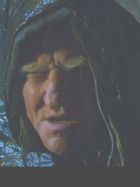
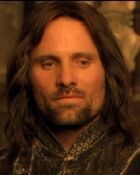



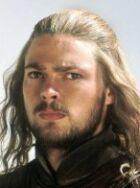

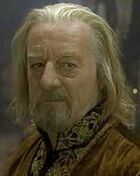
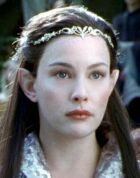
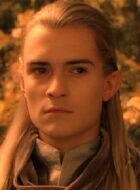
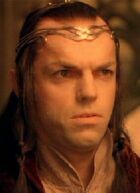
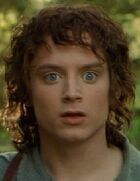


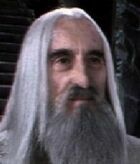

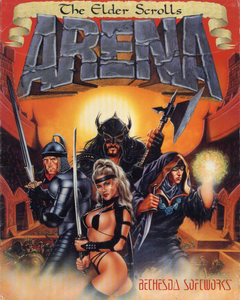









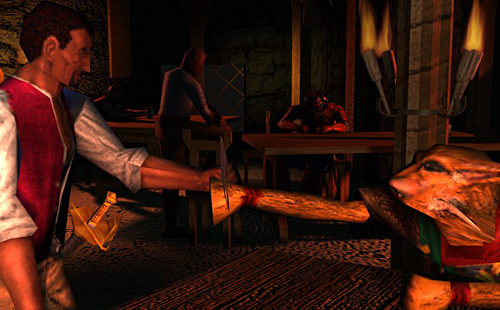


































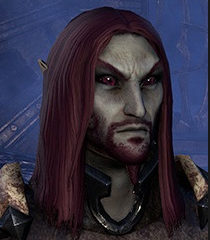













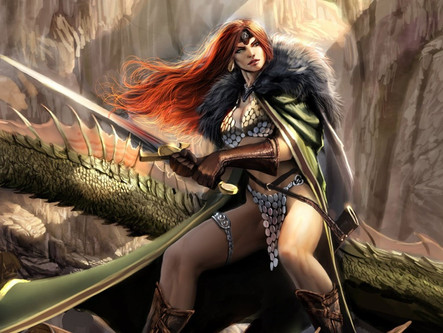











Comments